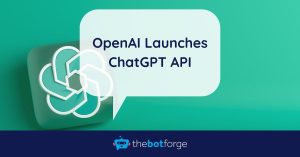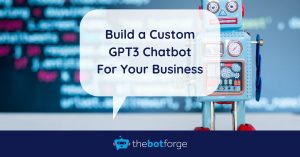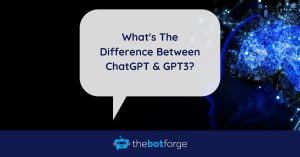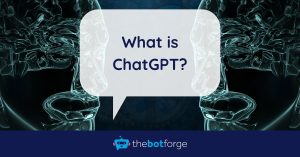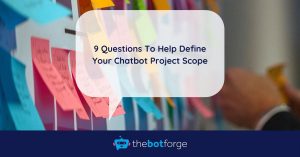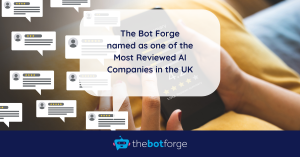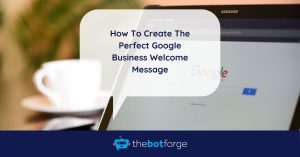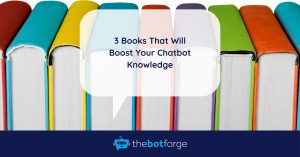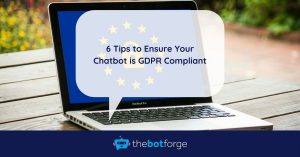Molzana and Coherence, Better Together
We’re excited to announce that Molzana, data and analytics experts, are joining Coherence to create a single integrated data, analytics, design and engineering capability. Molzana brings huge expertise helping brands such as HS1 and the British Business Back to manage everything from conversion rate optimisation to automation and data warehousing. Together they create a team…
Read MoreHow To Create The Perfect Digital Human
The Rise of Digital Humans In recent years, digital humans have become increasingly popular in various industries, from entertainment to customer service. There have been rapid advances in digital human platforms which offer increasingly lifelike capabilities and rich functionality. So it’s easier to create a digital human with current technologies but like any conversational AI…
Read MoreOpenAI Launches ChatGPT API
OpenAI has finally launched the ChatGPT API For some time, companies have claimed to use ChatGPT in their technology stack, something we’ve highlighted in the past. In reality, they were using GPT-3.5, also known as the davince-003 model. While this model was an improvement from GPT-3, it lacked the fine-tuning conversational capabilities of ChatGPT that…
Read MoreMust-Read Books To Learn Conversation Design
Introduction Conversation design is a critical aspect of creating successful digital humans, chatbots, and voice assistants. The field of conversation design involves designing the flow and structure of interactions between users and these digital entities. Designing a truly engaging conversation, that works, requires skill. There is a lot to learn as it’s a complex and…
Read MoreBuild a Custom AI-Powered GPT3 Chatbot For Your Business
The Rise Of ChatGPT ChatGPT has rapidly gained popularity worldwide, with millions of users relying on its vast knowledge database and ability to hold a multi-turn conversation of considerable complexity. However, despite its usefulness for general information, ChatGPT is limited to pre-2021 publicly available internet data, and it has no access to your private data…
Read MoreWhat’s The Difference Between ChatGPT & GPT3?
ChatGPT Confusion At the time of writing, since the launch of ChatGPT at the end of November 2022, numerous solutions have hit the market claiming to be ChatGPT-branded. However, I’m here to clarify that these solutions are not ChatGPT, but rather GPT3 solutions. There seems to be a lot of confusion between ChatGPT and GPT3.…
Read MoreWhat is ChatGPT?
AI-Mazing ChatGPT is the latest technology release from the team at OpenAI and it’s taken the internet by storm. Reactions ranged from amazement to scepticism, with everything in between. It’s been hugely popular with more than a million people using it in the first 5 days. ChatGPT is OpenAI’s latest large language model, released on…
Read MoreArabic NLP Guide [2023 Update]
Introduction Arabic is the fourth most spoken language on the internet and arguably one of the most difficult languages to create automated conversational experiences for, such as chatbots. An Arabic chatbot is a program that can understand and respond in Arabic. Natural language technologies enabling us to simulate and process human conversations in Arabic have improved…
Read More9 Questions To Help Define Your Chatbot Project Scope [2023 Update]
Defining Your Chatbot Project Scope So what is a scope of work? In terms of conversational AI development, a scope of work typically outlines the specific tasks and objectives that will be accomplished during the project. This can include details such as the functionality of the chatbot, the technologies and platforms to be used, the…
Read MoreHow Much Does it Cost To Build a Chatbot in 2023?
Tips. Insight. Offers. Are You In? Your Email Address Please enter a valid email address. I agree that The Bot Forge can email me news, tips, updates & offers. I know that I can unsubscribe at any time. You must accept the Terms and Conditions. Sign Me Up Thank you for subscribing! Something went wrong.…
Read MoreThe Bot Forge is One of the Most Reviewed UK AI Companies in 2022
The Manifest Recognizes The Bot Forge as One of the Most Reviewed AI Companies in the UK The Bot Forge creates modern solutions to improve organizational efficiency for our partners. Our team of experts helps you design, build, launch, or support enterprise-grade chatbots, voice assistants, and conversational IVR solutions. We aid you in making the…
Read MoreHow To Create The Perfect Google Business Welcome Message
Why Google Business Messages? Google Maps has 155 million monthly users and it’s estimated that Google handles 5.6 billion searches per day – two trillion searches a year! Connecting with your customers at these two touchpoints is more beneficial than ever. Gone are the days when you needed to send customers to a website or social media profile…
Read More3 Books That Will Boost Your Chatbot Knowledge
Introduction Currently, chatbots are dominating online markets, especially in countries such as the U.S., India, Germany, Brazil, and the UK. According to a Business Insider article on chatbot statistics, 40% of internet users worldwide prefer chatbots over virtual agents because they get answers quickly and more conveniently due to their 24-hour service. Due to the…
Read More6 Tips to Ensure Your Chatbot is GDPR Compliant
Tips. Insight. Offers. Are You In? Your Email Address Please enter a valid email address. I agree that The Bot Forge can email me news, tips, updates & offers. I know that I can unsubscribe at any time. You must accept the Terms and Conditions. Sign Me Up Thank you for subscribing! Something went wrong.…
Read MoreWhat Makes a Successful Chatbot Project?
Tips. Insight. Offers. Are You In? Your Email Address Please enter a valid email address. I agree that The Bot Forge can email me news, tips, updates & offers. I know that I can unsubscribe at any time. You must accept the Terms and Conditions. Sign Me Up Thank you for subscribing! Something went wrong.…
Read More

